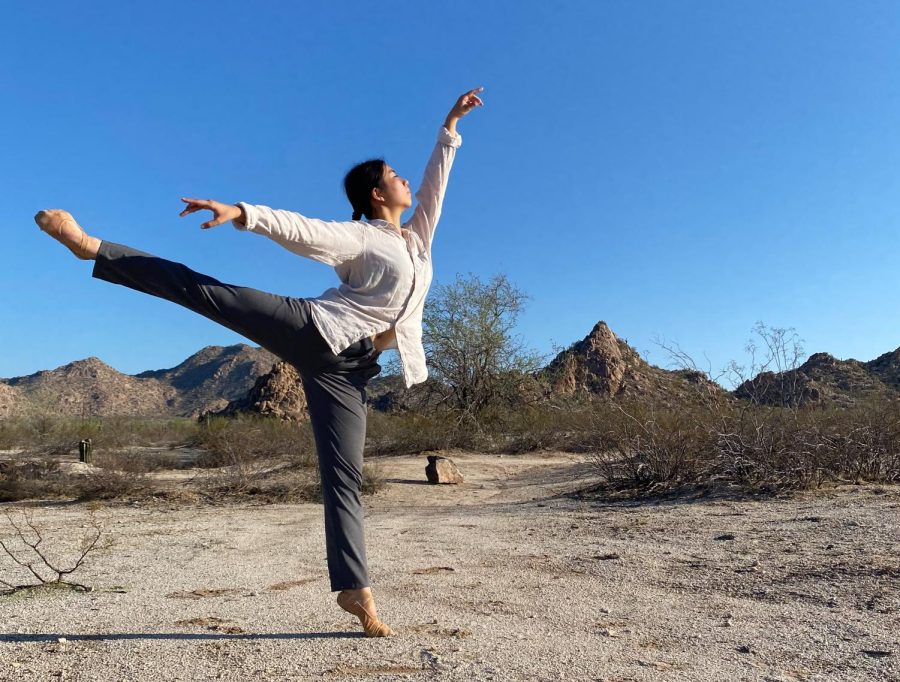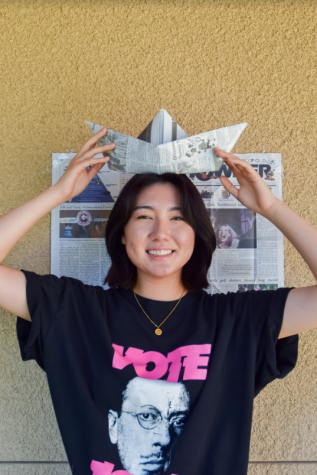Dancer Emily Okamoto finds beauty within brokenness
October 27, 2021
In the past year, Asian empowerment has integrated itself into different mediums and platforms, including art, music, speeches and more. As a recent recipient of the Kintsugi Spirit Grant, senior Emily Okamoto finds her medium through dance, within a short film that reflects on the lasting influence of internment camps on modern generations of Japanese Americans.
“‘Kintsugi’ refers to a Japanese broken pottery design that surrounds the idea of finding beauty in the brokenness,” Okamoto said.
Okamoto was one of five artists commissioned by the Japanese American Cultural Community Center to make their projects, ranging from music, dance, art and short films, come to life. Recipients of the Kintsugi Spirit Award, such as Okamoto, reflected on the endurance of Japanese Americans, while revolving around the theme of “Finding Beauty in the Brokenness.”
Okamoto and Krystal Matsuyama-Tsai, one of her mentors and collaborators for the project, came together to create a dance that reflected on their personal Japanese American identity. At the height of COVID-19, the two collaborated over Zoom for choreography and visual brainstorms. Their video features clips of their grandmothers, who were interned at Gila River, Arizona and Rohwer, Arkansas. Okamoto performs the dance near the Gila River, while Matsuyama-Tsai performs in front of her grandmother’s house in Gardena. The choreography and scenic visuals are chilling and jaw-dropping, perfectly portraying how Japanese American internment continues to play an integral role in Asian empowerment to this day.
“We wanted to create a film where dance was used in a way to connect the two of us in different locations,” Okamoto said. “I filmed in the place where my grandmother was born, while Krystal filmed in a modern-day setting, representing that time does not get rid of the pain Japanese Americans have faced.”
Okamoto’s journey with dance began at the age of 6 at her current studio, Dmitri Kulev Classical Ballet Academy. While her love for the art was gradual, Okamoto continued to work persistently, leading to her joining the professional division her sophomore year.
“Ballet is one of my greatest passions, and I kept pursuing it, knowing that I was sacrificing some of my middle school and high school experiences in order to meet my rigorous schedule,” Okamoto said.
The biggest influences on her contemporary style and ballet background were her instructors, Dmitri and Jennifer Kulev, who introduced their techniques, movement quality and style of choreography to Okamoto.
With her passion for dance continuing to play a strong influence in her life, Okamoto plans to pursue dance after high school, while finding more opportunities and studios in Orange County to improve and explore her skills. Okamoto’s short film can be found on YouTube, under the name “永遠 (Eien): Forever.”



![AAAAAND ANOTHER THING: [CENSORED] [REDACTED] [BABY SCREAMING] [SIRENS] [SILENCE].](https://thehowleronline.org/wp-content/uploads/2025/06/lucy-1200x800.jpg)

















































![AAAAAND ANOTHER THING: [CENSORED] [REDACTED] [BABY SCREAMING] [SIRENS] [SILENCE].](https://thehowleronline.org/wp-content/uploads/2025/06/lucy-300x200.jpg)



